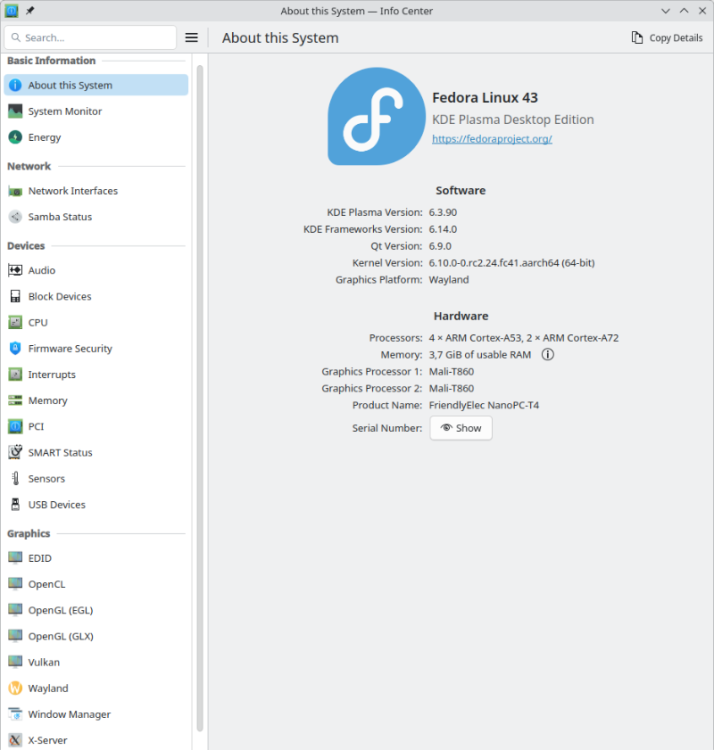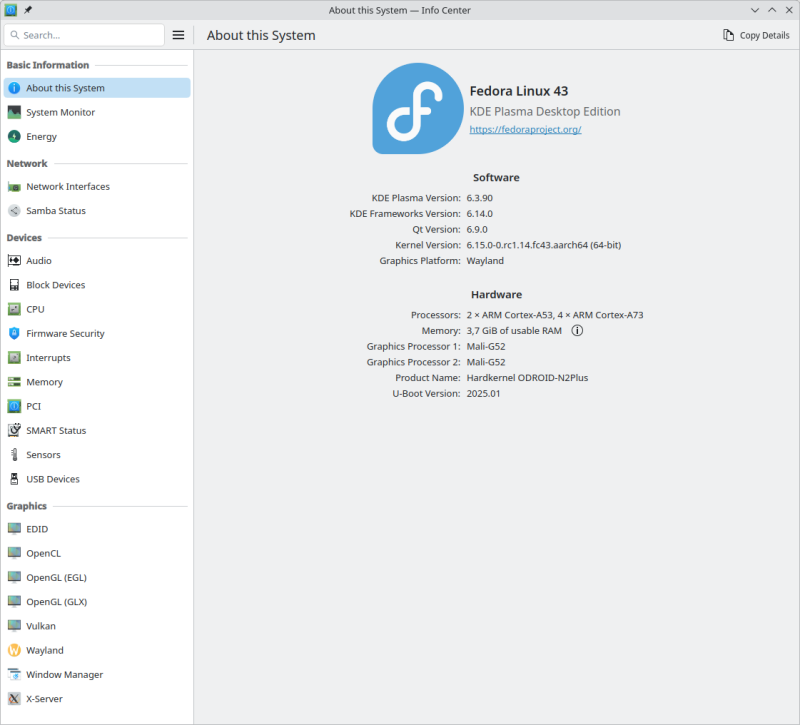
usual user
Members-
Posts
468 -
Joined
-
Last visited
Recent Profile Visitors
The recent visitors block is disabled and is not being shown to other users.
-
It leaves the device with an intact file system. The corrupted file system structure has likely been restored by rolling back the journal during the automatic file system check of the unmounted file system at system startup. But the data loss is permanent. There is a reason why UPS systems exist.
-
I don't know your plans for how things are supposed to proceed. But if you plan to continue using my firmware build, I would suggest transferring it to the SPI flash, provided you are not wanted to use any other firmware in there. - This relieves you from having to pay attention to restoring my firmware build when changing an image. - You have two firmware versions available to you, between which you can switch with the SPI-MMC boot switch. - Even without the eMMC module, you can boot an OS from another connected storage device. - The U-Boot console is also available with an HDMI monitor and a USB keyboard and can be used for analysis in the event of startup problems. Of course, it is also used to select various boot options if autoboot is interrupted.
-
Use: dd bs=512 seek=1 conv=notrunc,fsync if=odroid-n2/u-boot-meson.bin of=/dev/${entire-device-to-be-used} as outlined in the referenced post to replace the existing firmware on the eMMC. Firmare is residing outside of partition layout structures so you can only write it by absolute access.
-
Certainly, but I don't know if anyone has taken the effort to integrate a current version so far. The mainline U-Boot project always provides the source codes for the latest versions. You can build it by yourself with the Armbian build framework, or use my build for a quick test.
-
The log is telling that the firmware can't operate the eMMC: Furthermore, the alternatively attempted BOOTP and PXE boot are also unsuccessful because it seems that a server is found, but the necessary bootflow is not configured correctly. As you are running a quite dated U-Boot, maybe using a cureent release has better support for the eMMC.
-
My NanoPC-T4 is still alive: For a quick test, I used my NVME with my latest OS, which usually powers a different SBC: Please do not let it bother you that the NanoPC-T4 uses an outdated kernel to run the OS. This is due to my negligence in building the current kernel without the necessary hacks needed for proper HDMI functionality. Some of the hacks have now been proper implemented in mainline, while others are still in flight. Until this process is completed, I have decided out of laziness to temporarily use an outdated kernel, as I do not miss any functionalities that a current kernel could provide me. My status LED is not blinking at boot at all. To debug boot problems, blinking LEDs are the worst possible option. Only proper console logs are of value. During OS runtime, it is configured as an HDD LED to indicate access to the microSD, as this is important information for when it is safe to remove it. I am still running my firmware from the microSD, again out of laziness to copy it to the eMMC. But any of nessesary support for the NanoPC-T4 is availabe and maybe some boring day or some spezial demand let me revisit to configure it properly. Until then, the bitrottining configuration is sufficient to serve more or less as an always-on terminal server for several USB serial adapters, which provide me with console access to my other SBCs if necessary.
-

Odroid m1 Won't boot on recent images in armbian download section
usual user replied to Mickynuts's topic in Odroid M1
EXIT to the U-Boot console and report the output of the following command: bootflow scan -l nvme I don't know what the armbian-install does, but does it make a difference if you dd the same unmodified image to the NVME as you do to the microSD? -

Odroid m1 Won't boot on recent images in armbian download section
usual user replied to Mickynuts's topic in Odroid M1
This one. -

Odroid M1: USB disk not detected after kernel upgrade 6.6.63->6.12.9
usual user replied to rmrf's topic in Rockchip
Ok, moved on to 6.14-rc1. No regressions were observed, only current fixes were applied, and new features were enabled. It may take some time for some of the fixes to trickle into new stable releases, but the new features are never officially backported. Moved on to 6.15-rc1 (boot-analyze-odroid-m1.pdf). No regressions were observed, only current fixes were applied, and new features were enabled. -

Odroid m1 Won't boot on recent images in armbian download section
usual user replied to Mickynuts's topic in Odroid M1
Ok, judging by your information, the regression takes place during the transition from U-Boot 2024.04 to 2024.07. Since mainline U-Boot works perfect for me up to until 2025.01, it must be because of how it's built or what additional patches are applied. Since it cannot be ruled out that it is due to a incompatible bootflow, it may be interesting to try it with my build. If this also fails, it is possible to get more information from the HDMI output, even if access to the serial console is not available. For the test it is perfectly sufficient to start the firmware from a prepared microSD card via RCY button. The existing setup can stay completely unchanged. -

Odroid M1: USB disk not detected after kernel upgrade 6.6.63->6.12.9
usual user replied to rmrf's topic in Rockchip
For me USB works as expected: I don't have any usbstoragequirks in place because my storage devices have controllers with properly working UAS support. I'm currently at 6.13-rc1 and will stay there at least for another two weeks. -
But I'm grateful that it also works for me with pure U-boot:
-
I'm currently at: # uname -a Linux micro-015 6.13.0-0.rc1.20241204gitfeffde684ac2.17.fc42.aarch64 #1 SMP PREEMPT_DYNAMIC Sat Dec 7 11:18:10 CET 2024 aarch64 GNU/Linux And with better wired up in DTB I get:
-
Works for me as for @rmrf. iperf3 -c ... [ ID] Interval Transfer Bitrate Retr [ 5] 0.00-10.00 sec 1.10 GBytes 942 Mbits/sec 0 sender [ 5] 0.00-10.01 sec 1.09 GBytes 938 Mbits/sec receiver iperf3 -R -c ... [ ID] Interval Transfer Bitrate Retr [ 5] 0.00-10.00 sec 412 MBytes 345 Mbits/sec 485 sender [ 5] 0.00-10.00 sec 410 MBytes 344 Mbits/sec receiver
-

Odroid m1 Won't boot on recent images in armbian download section
usual user replied to Mickynuts's topic in Odroid M1
Ok, then no further action needs to be taken and your solution can be used by others in the future. I also don't need any other firmware because my current one works according to my needs. And for an update, I know how to build and debug it if necessary. In the meantime, I've moved to 2025.01 with HDMI support enabled, so I no longer need the serial console to interact with the firmware. And boot menus easily allow the free choice of which option should currently be booted.


